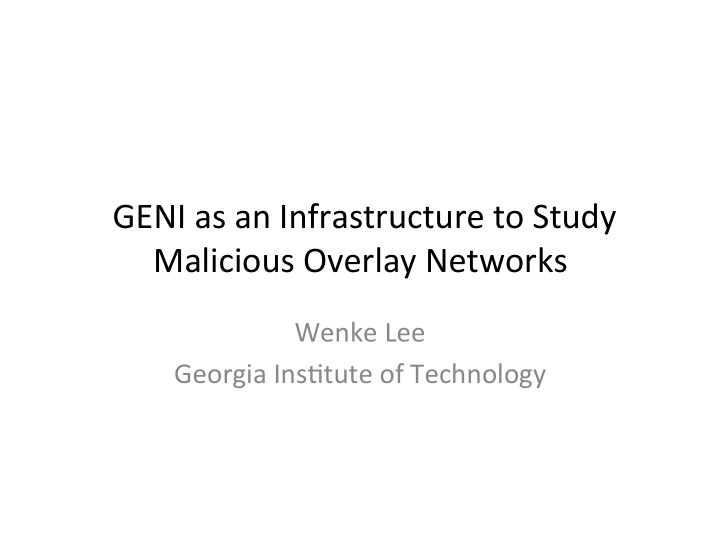



GENI as an Infrastructure to Study Malicious Overlay Networks Wenke Lee Georgia Ins=tute of Technology
Goals • Use GENI as a large‐scale distributed test‐bed for security research – The best we can get if we can’t experiment on the real Internet • Leapfrog our ability to understand large‐scale malicious networks (botnets) and predict their future trends – Essen=al proper=es of botnets, how botnets must rely on core network services, trade‐offs of botnet design considera=ons, etc. • Evaluate botnet detec=on and removal technologies
A New Look at Botnets • Analyze essen=al proper=es of botnet lifecycle – E.g., botnets are valuable, long‐term resources • Derive axioms that directly follow from the proper=es – E.g., botnets need to have agility to evade detec=on and removal • Derive theories from the axioms – E.g., a par=cular kind of botnet structure has bePer network agility than the others – E.g., by detec=ng and neutralizing the sources of network agility , we can limit botnets’ evasion capabili=es and thus make botnets easier to detect and remove • Apply the theories to prac3ce – E.g., what are the ways that network agility can be realized? – E.g., an on‐line detec=on of naming (DNS) based agility.
An Experimental Approach • Experiment with design and deployment, as well as detec=on and removal of botnets on GENI, e.g., – design various types of botnets – topology structures, characteris=cs/values of essen=al proper=es, etc. – deploy these botnets – measure their propaga=on speed, size, aggregate aPack power, etc. – evaluate detec=on and removal techniques
Recommend
More recommend